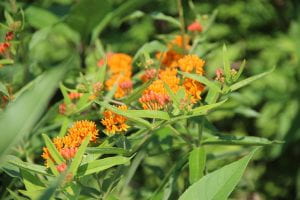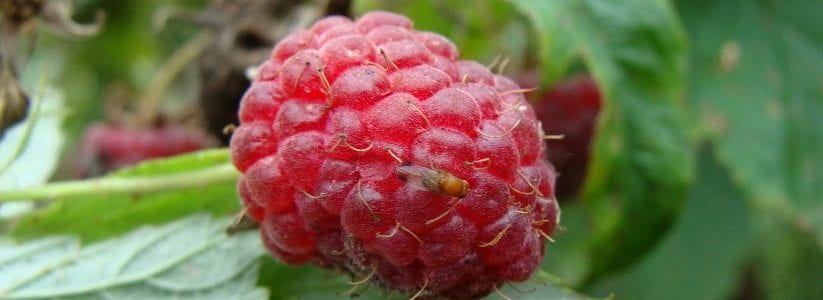There are many plants that ruby-throated hummingbirds will source nectar from. These tiny birds are curious and will explore new sources of nectar, especially in their first year. Banding studies have shown they return each year to the same place they fledged, especially if the area is rich in nectar-producing flowers (or the feeders you put out) to sustain their high rate of metabolism — highest of any warm-blooded animal — and the small insects they must eat.

They forage on at least 31 plant species in 21 genera in 18 families. In NY, their nesting distribution has been correlated with bee balm, Monarda didyma. Columbine, Aquilegia canadensis, and common jewelweed, Impatiens capensis are often also noted as favored food plants.
Below, I'm reprinting a list of plants you might consider growing or encouraging in your yard or around your berry plantings to favor ruby-throated hummingbirds. This list is taken from Hummingbirds: Jewels in Flight, 1992, by Connie Toops, Voyageur Press, Stillwater, MN. I loved the way the list is organized on page 115.
Annuals
- snapdragon, Antirrhinum majus
- foxglove, Digitalis purpurea
- gladiolus, Gladiolus hybrids
- impatiens, Impatiens hybrids
- scarlet sage, Slavia splendens
- nasturtium, Tropaeolum majus
Perennials
- columbine, Aquilegia canadensis
- butterflyweed, Asclepias tuberosa
- delphinium 'King Arthur', Delphinium hybridum
- bleeding ehart, Dicentra eximia
- coral bells, Heuchera sanguinea
- jewelweed, Impatiens capensis
- cardinal flower, Lobelia cardinalis
- bee-balm, Monarda didyma
- wild sweet William, Phlox maculata
Vines
- morning glory, Ipomoea purpurea
- trumpet honeysuckle, Lonicera sempervirens
- scarlet runner bean, Phaseolus coccinea
Shrubs
- buttonbush, Cephalanthus occidentalis
- flowering quince, Chaenomeles japonica
- autumn olive, Elaeagnus umbellata
- lilac, Syringa vulgaris
- cardinal shrub, Weigela florida
Trees
- redbud, Cercis canadensis
- hawthorn, Craetaegus spp. hybrids
- tulip tree, Liriodendron tulipifera
When choosing varieties, select those that are red or in shades of red, which ruby-throats prefer. Happy growing!

